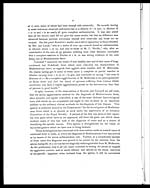Medicine - Institutions > Army health reports and medical documents > Scientific memoirs by officers of the Medical and Sanitary Departments of the Government of India > Number 22 - Mediterranean fever in India > Mediterranean fever in India : isolation of the Micrococcus melitensis
(9) [Page 1]
Download files
Individual page:
Thumbnail gallery: Grid view | List view
![(1) [Page 1] -](https://deriv.nls.uk/dcn17/7502/75028374.17.jpg)
MEDITERRANEAN FEVER IN INDIA: ISOLATION OF
THE MICROCOCCUS MELITENSIS*,
SINCE Wright's 1 discovery in 1897 that the serum of patients who are
suffering from or who have recovered from Mediterranean fever has a specific
agglutinating reaction on M. Melitensis this method of diagnosis has been applied
to the elucidation of the continued Indian fevers. Thus Wright and Smith 2 have
tabulated 10 cases invalided from India, in which the serum gave a sedimenta-
tion reaction with M. Melitensis in dilutions ranging in most cases from 1 in 150
to 1 in 300. Many of these cases at the time of the examination presented
the usual sequelæ of the disease. At a later date 10 other examples were
observed by Birt and Lamb 3 in the Royal Victoria Hospital, Netley, in patients
who had been invalided for such diseases as malaria, typhoid fever and
rheumatism. It is worthy of remark that 14 out of the total of 20 cases thus
observed came from Mian Mir; the other places where infection had occurred
were Calcutta, Sabathu and Nowshera.
In 1900 one4 of us working in Bombay had the opportunity of studying
five cases of Mediterranean fever, which had evidently been contracted in
that city. These were cases of irregular fever without definite symptoms,
although marked sweating and pains in the joints were present in all instances.
A definite diagnosis was arrived at only by means of the serum agglutination
reaction.
A short time afterwards four cases were diagnosed in Simla.5 All these
showed clear clinical symptoms and the sera of two of the patients gave positive
reactions with M. Melitensis. The sera of the other two cases were not examined.
In 1901 Greig 6 reported three cases of Mediterranean fever occurring in the
Swat valley. This diagnosis was reached by means of the serum agglutination
reaction, although the clinical symptoms were also very suggestive.
In 1904 Konrich,7 working in Kolle's laboratory, made a series of agglutina-
tion experiments with M. Melitensis, which consisted in testing the agglutina-
tion and sedimentation reaction of seven strains of M. Melitensis with the sera
* This paper was received for publication on August 22nd, 1905.
Set display mode to: Large image | Zoom image | Transcription
Images and transcriptions on this page, including medium image downloads, may be used under the Creative Commons Attribution 4.0 International Licence unless otherwise stated. ![]()
| Permanent URL | https://digital.nls.uk/75028372 |
|---|
| Description | Isolation of the Micrococcus melitensis by George Lamb. |
|---|---|
| Shelfmark | IP/QB.10 |
| Additional NLS resources: | |




